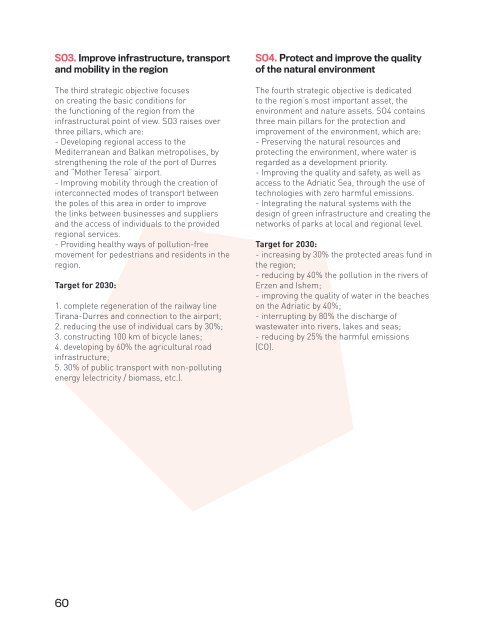Integrated Cross-Sectorial Plan of Tirana-Durres Area
The Albanian Government and the National Spatial Plan have identified the Tiranë-Durrës area, as one of the most important economic areas of the country, and of the Balkan region. To ensure a sustainable territorial and urban development of this area, the Ministry of Urban Development in cooperation with the National Territorial Planning Agency has taken the initiative to draft a Cross-sectoral Integrated Plan for the economic area Tiranë – Durrës. The metropolitan region under study includes territories administered by 5 municipalities: Tiranë, Durrës, Vorë, Shijak, Kamëz.
The Albanian Government and the National Spatial Plan have identified the Tiranë-Durrës area, as one of the most important economic areas of the country, and of the Balkan region. To ensure a sustainable territorial and urban development of this area, the Ministry of Urban Development in cooperation with the National Territorial Planning Agency has taken the initiative to draft a Cross-sectoral Integrated Plan for the economic area Tiranë – Durrës. The metropolitan region under study includes territories administered by 5 municipalities: Tiranë, Durrës, Vorë, Shijak, Kamëz.
Create successful ePaper yourself
Turn your PDF publications into a flip-book with our unique Google optimized e-Paper software.
SO3. Improve infrastructure, transport<br />
and mobility in the region<br />
The third strategic objective focuses<br />
on creating the basic conditions for<br />
the functioning <strong>of</strong> the region from the<br />
infrastructural point <strong>of</strong> view. SO3 raises over<br />
three pillars, which are:<br />
- Developing regional access to the<br />
Mediterranean and Balkan metropolises, by<br />
strengthening the role <strong>of</strong> the port <strong>of</strong> <strong>Durres</strong><br />
and “Mother Teresa” airport.<br />
- Improving mobility through the creation <strong>of</strong><br />
interconnected modes <strong>of</strong> transport between<br />
the poles <strong>of</strong> this area in order to improve<br />
the links between businesses and suppliers<br />
and the access <strong>of</strong> individuals to the provided<br />
regional services.<br />
- Providing healthy ways <strong>of</strong> pollution-free<br />
movement for pedestrians and residents in the<br />
region.<br />
Target for 2030:<br />
1. complete regeneration <strong>of</strong> the railway line<br />
<strong>Tirana</strong>-<strong>Durres</strong> and connection to the airport;<br />
2. reducing the use <strong>of</strong> individual cars by 30%;<br />
3. constructing 100 km <strong>of</strong> bicycle lanes;<br />
4. developing by 60% the agricultural road<br />
infrastructure;<br />
5. 30% <strong>of</strong> public transport with non-polluting<br />
energy (electricity / biomass, etc.).<br />
SO4. Protect and improve the quality<br />
<strong>of</strong> the natural environment<br />
The fourth strategic objective is dedicated<br />
to the region’s most important asset, the<br />
environment and nature assets. SO4 contains<br />
three main pillars for the protection and<br />
improvement <strong>of</strong> the environment, which are:<br />
- Preserving the natural resources and<br />
protecting the environment, where water is<br />
regarded as a development priority.<br />
- Improving the quality and safety, as well as<br />
access to the Adriatic Sea, through the use <strong>of</strong><br />
technologies with zero harmful emissions.<br />
- Integrating the natural systems with the<br />
design <strong>of</strong> green infrastructure and creating the<br />
networks <strong>of</strong> parks at local and regional level.<br />
Target for 2030:<br />
- increasing by 30% the protected areas fund in<br />
the region;<br />
- reducing by 40% the pollution in the rivers <strong>of</strong><br />
Erzen and Ishem;<br />
- improving the quality <strong>of</strong> water in the beaches<br />
on the Adriatic by 40%;<br />
- interrupting by 80% the discharge <strong>of</strong><br />
wastewater into rivers, lakes and seas;<br />
- reducing by 25% the harmful emissions<br />
(CO).<br />
60
















